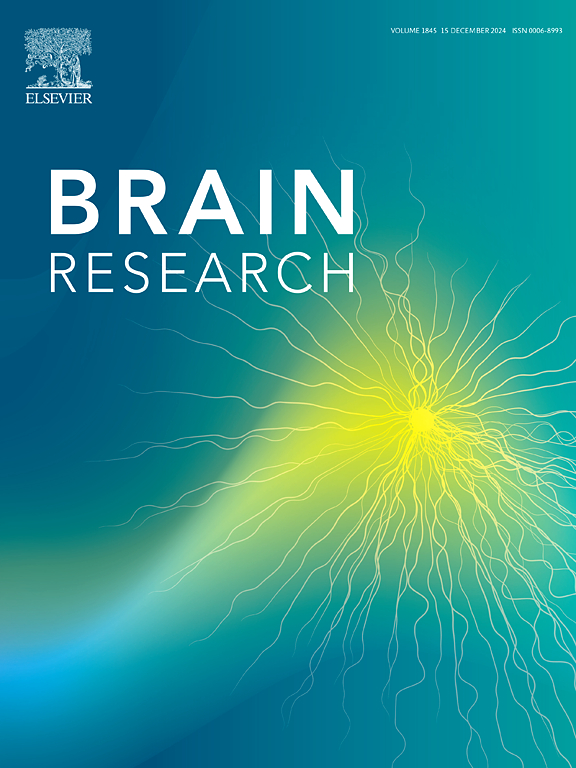研究免疫细胞与额颞叶痴呆症之间的因果关系:孟德尔基因组化分析
IF 2.7
4区 医学
Q3 NEUROSCIENCES
引用次数: 0
摘要
背景:额颞叶痴呆(FTD)是一种普遍存在的痴呆综合征,其免疫学基础知之甚少。尽管高密度基因分型技术(如snp和CNVs)被广泛采用,并且全基因组关联研究(GWAS)也取得了进展,但FTD的免疫学机制仍然难以捉摸。本研究旨在利用孟德尔随机化方法阐明免疫细胞性状与FTD之间的因果关系。方法:我们利用FinnGen数据集中FTD的汇总数据(病例 = 129,对照组 = 392,463)和GWAS目录中731个免疫细胞特征的汇总统计数据。这些性状包括形态学参数(MP = 32)、中位荧光强度(MFI = 389)、绝对细胞计数(AC = 118)和相对细胞计数(RC = 192)。我们的方法包括正向磁共振(免疫细胞特征作为暴露)和反向磁共振(FTD作为暴露),并伴有严格的敏感性分析,以评估研究结果的稳健性和异质性。结果:FTD对免疫表型无统计学显著影响。值得注意的是,我们确定了13种免疫表型对FTD具有保护作用,包括各种T细胞和B细胞标记物。相反,8种表型与FTD风险增加相关,包括骨髓细胞和T细胞和B细胞亚群的标记物;结论:这项MR研究确定了与FTD相关的特定免疫表型,强调了未来临床研究和治疗干预的潜在途径。本文章由计算机程序翻译,如有差异,请以英文原文为准。

Researching the causal relationship between immune cells and frontotemporal Dementia: A Mendelian Randomization analysis
Background
Frontotemporal dementia (FTD) is a prevalent dementia syndrome with poorly understood immunological underpinnings. Despite the widespread adoption of high-density genotyping technologies like SNPs and CNVs, and advances in genome-wide association studies (GWAS), the immunological mechanisms underlying FTD remain elusive. This study aims to elucidate the causal relationships between immune cell traits and FTD using Mendelian randomization (MR).
Methods
We utilized summary data for FTD (cases = 129, controls = 392,463) from the FinnGen dataset and summary statistics for 731 immune cell traits from the GWAS catalog. These traits included morphological parameters (MP = 32), median fluorescence intensity (MFI = 389), absolute cell counts (AC = 118), and relative cell counts (RC = 192). Our approach encompassed forward MR (immune cell traits as exposure) and reverse MR (FTD as exposure), accompanied by rigorous sensitivity analyses to assess the robustness and heterogeneity of the findings.
Results
FTD did not have a statistically significant impact on immune phenotypes. Notably, we identified 13 immune phenotypes as protective against FTD, including various T cell and B cell markers. Conversely, 8 phenotypes were associated with increased FTD risk, involving markers on myeloid cells and subsets of T and B cells;
Conclusion
This MR study identifies specific immune phenotypes associated with FTD, highlighting potential pathways for future clinical research and therapeutic intervention.
求助全文
通过发布文献求助,成功后即可免费获取论文全文。
去求助
来源期刊

Brain Research
医学-神经科学
CiteScore
5.90
自引率
3.40%
发文量
268
审稿时长
47 days
期刊介绍:
An international multidisciplinary journal devoted to fundamental research in the brain sciences.
Brain Research publishes papers reporting interdisciplinary investigations of nervous system structure and function that are of general interest to the international community of neuroscientists. As is evident from the journals name, its scope is broad, ranging from cellular and molecular studies through systems neuroscience, cognition and disease. Invited reviews are also published; suggestions for and inquiries about potential reviews are welcomed.
With the appearance of the final issue of the 2011 subscription, Vol. 67/1-2 (24 June 2011), Brain Research Reviews has ceased publication as a distinct journal separate from Brain Research. Review articles accepted for Brain Research are now published in that journal.
 求助内容:
求助内容: 应助结果提醒方式:
应助结果提醒方式:


